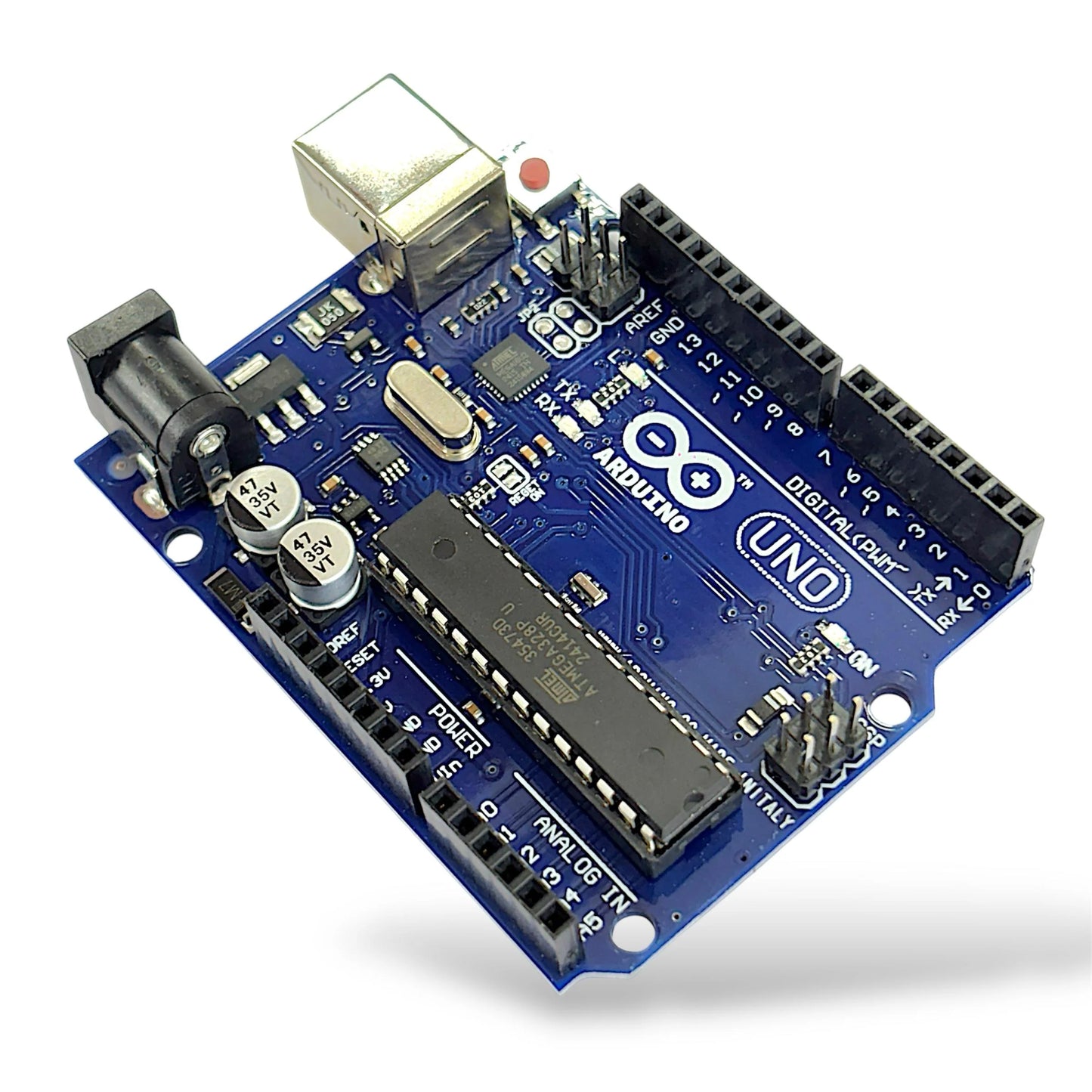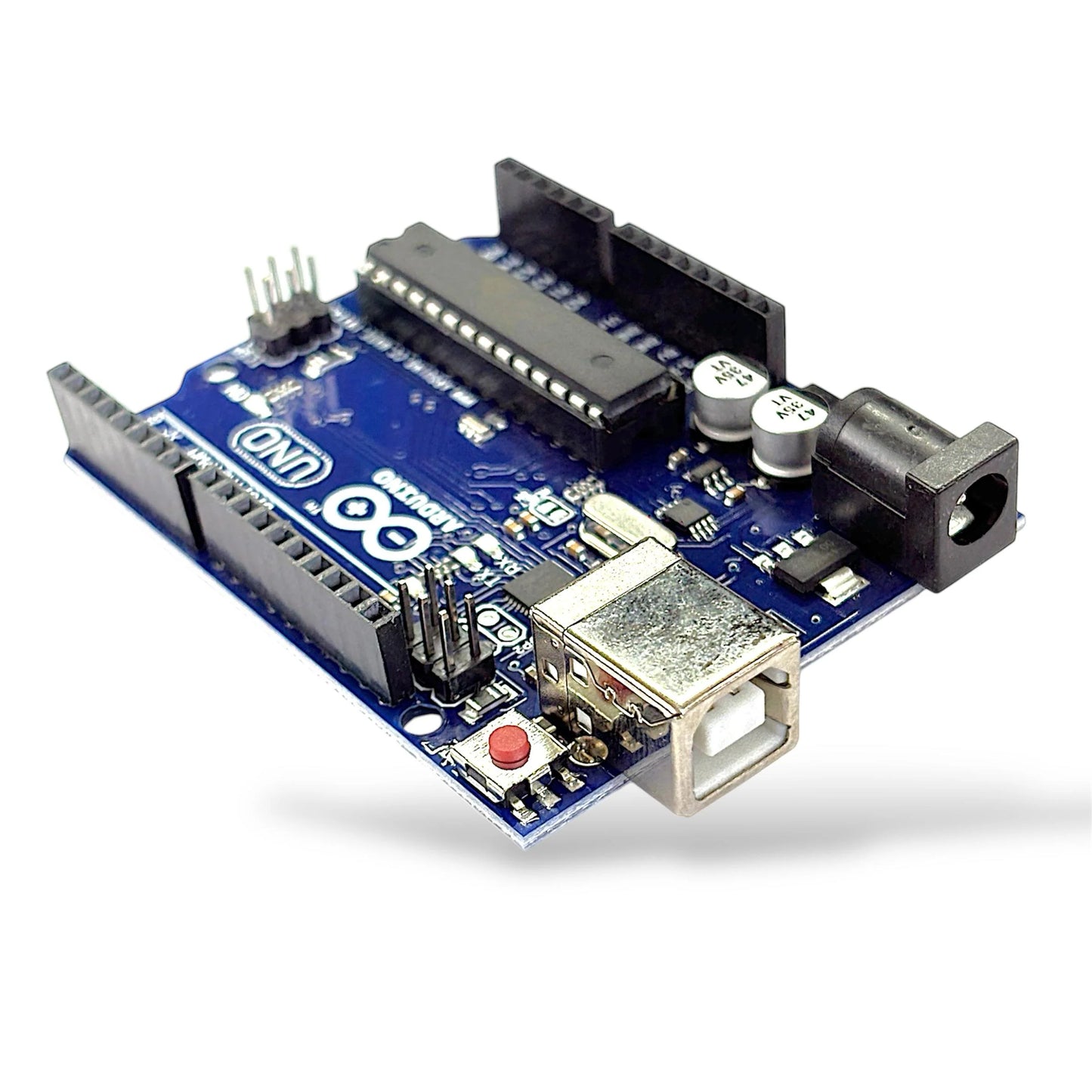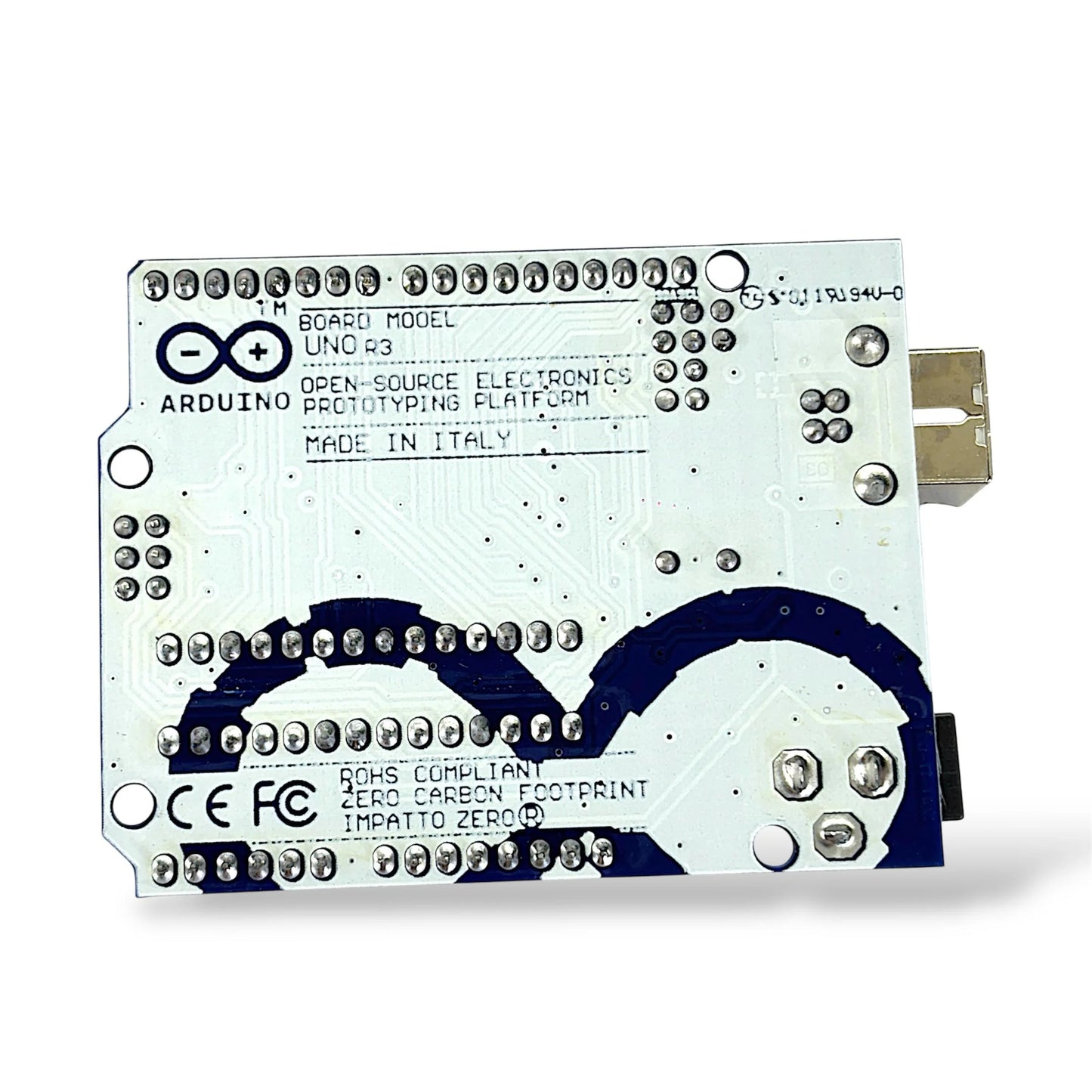Harish Projects
Arduino UNO DIP R3 | ATmega328P Microcontroller | Development Board for DIY Projects
Arduino UNO DIP R3 | ATmega328P Microcontroller | Development Board for DIY Projects
Couldn't load pickup availability
Share
Specification
- Microcontroller: ATMega328P
- Architecture: 8-bit AVR
- Operating Voltage: 5V
- Clock Speed: 16 MHz
- Flash Memory: 32KB (of which 0.5KB is used by the bootloader)
- SRAM: 2KB
- EEPROM: 1KB
- More Info : See Description
Description
Arduino UNO R3 (DIP) is a powerful and beginner-friendly microcontroller board based on the ATmega328P chip. It features a standard USB interface, 5V logic, and full compatibility with the Arduino IDE — perfect for electronics, robotics, and prototyping projects.
Here are the detailed specifications of the Arduino Uno R3 microcontroller board based on the ATmega328P:
Microcontroller:
– Microcontroller: ATMega328P
– Architecture: 8-bit AVR
– Operating Voltage: 5V
– Clock Speed: 16 MHz
– Flash Memory: 32KB (of which 0.5KB is used by the bootloader)
– SRAM: 2KB
– EEPROM: 1KB
Digital I/O Pins:
– Total Digital I/O Pins: 14
– PWM Digital I/O Pins: 6 (D3, D5, D6, D9, D10, D11)
– UART: 1
– SPI: 1
– I2C: 1
Analog Input Pins:
– Total Analog Input Pins: 6
– Analog Input Voltage Range: 0-5V
DC Current per I/O Pin: 20mA
DC Current for 3.3V Pin: 50mA
External Power Supply:
– Recommended Voltage Range: 7-12V DC
– Maximum Input Voltage: 20V
– Minimum Input Voltage: 6V
Operating Temperature: -40°C to 85°C
USB Interface:
– USB Type: Type-B
– USB to Serial Converter: ATmega16U2 or CH340 (depending on the version)
Dimensions:
– Length: 68.6mm
– Width: 53.4mm
– Weight: 25g
The Arduino Uno R3 board is compatible with a wide range of sensors, actuators, and expansion boards (shields), making it suitable for various projects and applications.
Desc:
The Arduino Uno R3 is a popular microcontroller board based on the ATmega328P microcontroller. It is part of the Arduino family of open-source electronics platforms and is widely used for prototyping and creating interactive projects.
Here are some key features of the Arduino Uno R3:
1. Microcontroller: The Arduino Uno R3 is powered by the ATMega328P microcontroller, which is an 8-bit AVR microcontroller. It operates at a clock speed of 16 MHz and has 32KB of flash memory for storing the program, 2KB of SRAM, and 1KB of EEPROM for data storage.
2. Digital and Analog I/O: The board has 14 digital input/output pins, out of which 6 can be used as PWM (Pulse Width Modulation) outputs. It also has 6 analog input pins.
3. USB Interface: The Arduino Uno R3 can be connected to a computer via a USB interface. It uses a USB to serial converter chip (ATmega16U2 or CH340) to communicate with the computer. This allows you to program the board and communicate with it using the Arduino software.
4. Power Supply: The board can be powered in two ways: through the USB connection or by an external power supply. The recommended voltage range for the power supply is 7-12V DC. It also has a built-in voltage regulator that provides a regulated 5V output, which can be used to power other components.
5. Programming: The Arduino Uno R3 can be programmed using the Arduino programming language, which is a simplified version of C++. The Arduino software provides a development environment where you can write and upload your code to the board. It also has a vast library of pre-built functions that make it easier to interact with various sensors, actuators, and other components.
6. Shields: The Arduino UNO R3 is compatible with a wide range of expansion boards called “shields.” These shields can be stacked on top of the Arduino board to add additional functionality such as Ethernet connectivity, wireless communication, motor control, and more.
Overall, the Arduino UNO R3 is a versatile and beginner-friendly microcontroller board that allows you to quickly prototype and build interactive projects with ease. Its simplicity and vast community support make it a popular choice for both hobbyists and professionals alike.




Wonderful and packaging is too good
Good
Harish sir please restock Arduino uno, N20 gear motor, bt speaker kit before 17 November. Please restock it very very soon because I want to buy it now. I only believe that you only can give me best product. I will wait but please bring it very very soon, before 17 max to max 19 November. Please bring it very soon 🙏🙏 . I will get all the things that I have bought from your website on 21 November. But I am not able to buy things (Same as above) this time. Please bring it very soon.🙏. I will always give you full ratings please bring it very soon please 🙏🙏.
Please bring it very soon because I want to buy it before 17 November 2025 .
Good initiative to let india learn.




